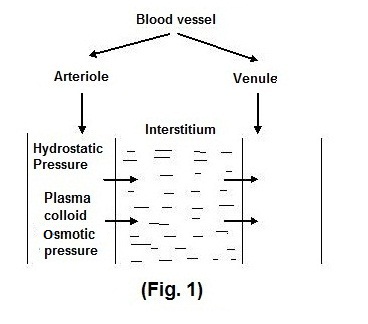Hematopoietic System
The human system is exposed to various substances, which may be detrimental to its functioning, leading to disease and even death. Such substances can enter into the body via food we eat, air we inhale or through abrasions in the skin. Metabolic activity in the body can provide such molecules. To do away with such matter, the human system has its own army. It comprises number of cells. Let us study their production, distribution and function.
Bone marrow produces a single type of cell, called the Pluripotent hematopoietic stem cell; from which all other cells of the circulating blood is derived. (Fig.1)

- Pluripotent Hematopoietic Stem Cell (PHSC)
- Colony Forming Unit – Spleen (CFU – S)
- Colony Forming Unit – Blast (CFU – B)
- Colony Forming Unit – Erythrocytes (CFU – E) — Erythrocytes
- Colony Forming Unit – Granulocytes, Monocytes (CFU — GM)– Granulocytes (Neutrophil, Eosinophil, Basophil), Monocytes – Macrocytes
- Colony Forming Unit – megakaryocytes (CFU – M)— megakaryocytes —Platelets
- PHSC
- Lymphoid Stem Cell (LSC)
- T Lymphocyte
- B Lymphocyte
These pluripotent hematopoietic stem cells reproduce forming colony forming units which further results in the formation of granulocytes (Neutrophils, Eosinophils, Basophils), Monocytes and Megakaryocytes. Megakaryocytes get fragmented and from platelets or thrombocytes.
Lymphocytes and plasma cells are produced mainly in lymphogenous tissues like lymph glands, spleen, thymus, tonsils, and various pockets of lymphoid tissue in the body. Like that, in the bone marrow or Payer’s patches of gut wall.
All these cells i.e. granulocytes, monocytes, lymphocytes and plasma cells are collectively named as leucocytes or white blood cells. They form the mobile units of body’s protective system.
The life of granulocytes, after being released from the bone marrow is normally 4 to 8 hours, circulating in the blood, and another 4 to 5 days in tissues where they are needed.
The monocytes remain in blood from 10 to20 hours, before entering into the tissue. Once in the tissue, they obtain a larger size to become “tissue macrophages”, in which form they can live for months unless destroyed while performing phagocytic function.
Lymphocytes enter the circulation continuously, along with drainage of lymph from the lymph nodes and other lymphoid tissue. After a few hours, they pass out of the blood back into the tissues by diapedesis (outward passage of these cells through the pores of intact blood vessels). Still later, they enter the lymph and return to the blood, again and again. Thus, lymphocytes continually circulate in the body. They have life span of weeks or months.
Tissue macrophages
Skin: Any foreign material may be an infection or other particles like chemicals, enter the broken skin and subcutaneous tissue. With the onset of local inflammatory response tissue macrophages, called histiocytes, proliferate and destroy the noxious agent.
Lungs: In the walls of alveoli of the lung are the macrophages. They phagocytize the particles that become entrapped in alveoli. Subsequently it is digested and the digestive product is released in to the lymph. If that is not possible, the macrophages form a giant capsule around the particle and tries to dissolve it slowly. Such capsules are frequently formed around tubercular bacilli, silica dust particles etc.
Liver: Many noxious substances including bacteria enter liver through portal blood. Liver sinusoids are lined by tissue macrophages called Kupffer cells. They form such an effective filtration system that rarely any bacteria enters into systemic circulation through portal blood.
Spleen and bone marrow: If an infective agent enters into systemic circulation macrophages of the spleen and bone marrow are called into play by which noxious agent is phagocytized.
